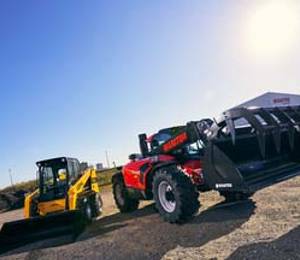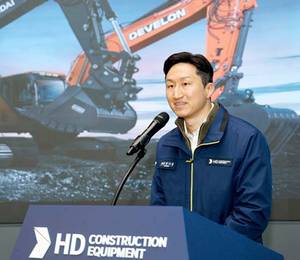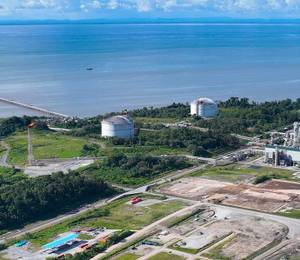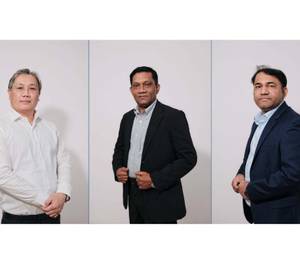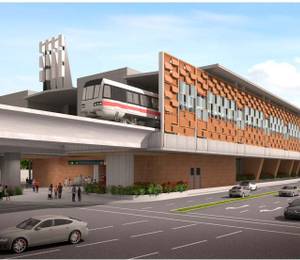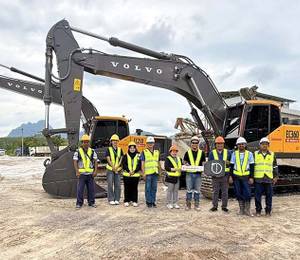Based in Zaragoza, Spain, MiDi Cranes manufactures compact, lightweight, road-towable self-erecting cranes weighing less than 3,500 kg. These units are ideal for small and medium-sized contractors, roofers, or carpenters, who need simple machines for maintenance, roofing and wood works; repairs and renovations; and other small construction jobs.
The most popular model from MiDi Cranes is currently the LS15.17RD, which was introduced last year. It reaches 15 m in height with a horizontal boom, featuring a 1,500 kg maximum load up to 6 m, and a tip load of 510 kg at 17 m.
All of the cranes are fully designed and manufactured at the company’s Zaragoza facility. They can be transported on a road trailer (B+E permit) and the assembly time is only about 15 minutes.
The cranes are equipped with hydraulic stabilisers, a remote control and an electric motor. Using a PLC with touchscreen, MiDi Cranes can connect to the machines remotely from the factory. “This helps us to diagnose any issues with the cranes,” said Miguel A. Marín, deputy general manager at MiDi Cranes.
“One of the mid-term projects we have is to digitalise our documentation, so that our users can access it anytime, anywhere, just with a QR Code,” he added.
‘The crane for the crisis’
The history of MiDi Cranes goes to back 1965 when the original company was founded. Its first design was the GT10 crane – a simple, economical and manually assembled equipment, reaching only 10 m in height with a 5 m boom
The GT10 “was a resounding success, highly appreciated by small builders, carpenters, roofers and renovators who worked in small towns throughout Spain,” noted Mr Marín.
“Since then, like all lifting equipment manufacturers, our product development had been oriented towards designing and manufacturing self-erecting cranes with increasingly higher loads and capacities. We managed to achieve a 34 m boom and a maximum load of 4 tm.”
But in 2008, the crisis hit. Mr Marín recalled, “The situation strongly affected this type of larger and more capable equipment, so closely linked to new housing projects. It made us rethink our continuity.
“New housing projects came to a complete standstill, and therefore the market did not require our equipment. No recovery was expected in the medium term, and the market was also saturated with this type of equipment.”
“This new situation led us to leave our comfort zone and sharpen our ingenuity,” shared Mr Marín. “It was then, when we identified an unattended market niche that grew continuously and dynamically despite the crisis: that of the rehabilitation of small homes, which required a compact, lightweight crane that is easy to assemble and handle, and competitive in price.”
In 2009, the first model of MiDi Cranes was unveiled – dubbed ‘the crane for the crisis’. The range was expanded in 2010.
Global expansion
Today, MiDi Cranes’ main markets include Germany, France, Belgium, Spain, Netherlands, Denmark, Czech Republic, Slovakia, Romania and the UK. Over the next few years, the company plans to expand into North America, Oceania and Southeast Asia.
“After a strong growth in the two years following the pandemic, we are experiencing a time of adjustment with a market slowdown, due to the increase in prices, interest rates and a feeling of insecurity regarding the international socio-political panorama,” explained Mr Marín. “However, the profile of our clients dedicated to rehabilitation makes our equipment become a commodity, and therefore we are confident in the evolution of the market in the medium term.”
“One of the projects that we have in mind to recover is the GT10 launched in the 60s,” revealed Mr Marín. “As the technology and capacities of cranes increase, they become more expensive. We believe that it may be a good idea to return to the simple idea of small crane with more manual assembly, to achieve a cost/performance balance that allows us to enter developing markets.”
MiDi Cranes currently has no intention to go back to the market for larger-capacity cranes. “In the short-medium term, we plan to continue being a specialist in tow cranes weighing less than 3,500 kg,” affirmed Mr Marín. “We believe that it is a market to develop, which, without being the majority, is an attractive niche for us.”
Note: SEAC visited MiDi Cranes’ facility in June 2024, as part of a press event organised by ANMOPYC in collaboration with ICEX (the Spanish Institute for Foreign Trade). This story has also been published in the Sept/Oct 2024 issue of SEAC. Click here to read it online or here to download the PDF file, on pages 60-61.
